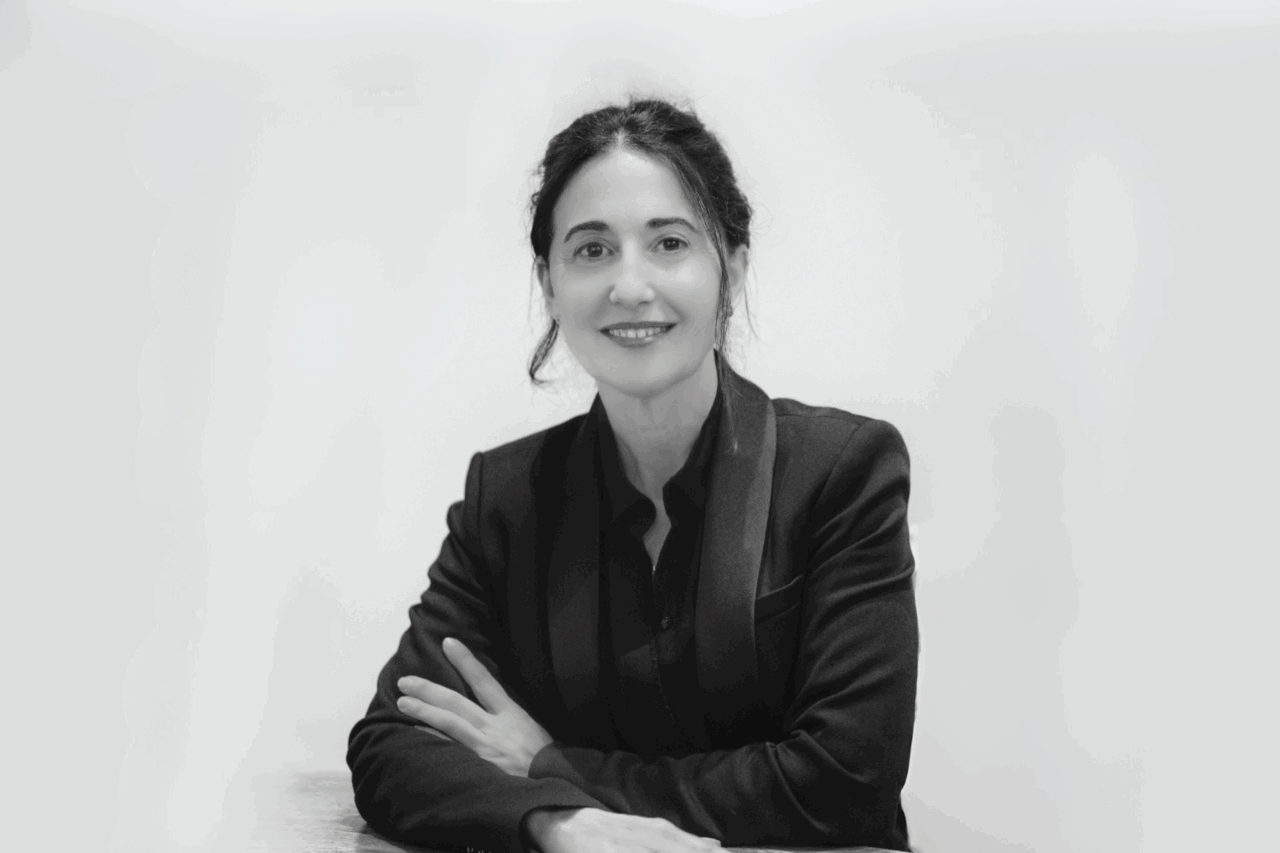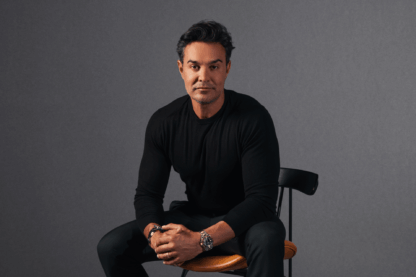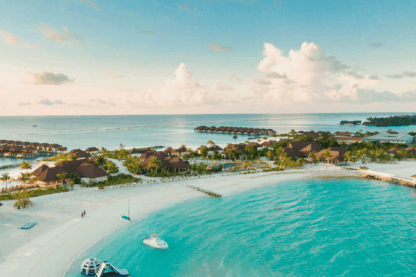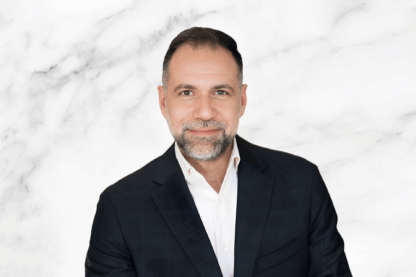In this exclusive feature, Alexander Chetchikov, President of the World Luxury Chamber of Commerce, sits down with Diana Verde Nieto, co-founder of Edify Collective and a globally recognized leader in business transformation, sustainability, and purposeful innovation. A pioneer in aligning strategy with impact, Diana has spent more than two decades guiding organizations through complexity, translating global challenges into resilient, high-performance solutions with lasting value.
As the force behind Edify Collective, an AI-powered, expert-led microlearning platform, Diana is revolutionizing workforce development by blending behavioural science with cutting-edge technology to build sustainability-literate, future-ready teams. She is also the author of Reimagining Luxury: How to Build a Sustainable Future for Your Brand, a critically acclaimed book exploring the intersection of purpose, design, and innovation in the new economy.
Beyond her entrepreneurial ventures, Diana serves on the boards of Watts 1874 and the British Beauty Council, holds a certificate in Global Leadership & Public Policy from Harvard Kennedy School, has been personally trained by former U.S. Vice President Al Gore, and was honored as a Young Global Leader by the World Economic Forum.
With a rare ability to connect commercial ambition with strategic sustainability, Diana offers a bold vision for the future of luxury, one where timeless values meet adaptive leadership in a rapidly evolving world.
Alexander Chetchikov: Diana, as a pioneer at the intersection of sustainability and luxury, how do you see legacy luxury brands balancing heritage with the urgent need for innovation and environmental responsibility?
DVN: In my book Reimagining Luxury, I explore how legacy luxury brands are redefining their relevance by navigating the delicate equilibrium between heritage and modernity. This balance is increasingly reflected in their strategic expansion into adjacent sectors such as hospitality and immersive experiences, areas that offer unique opportunities to deepen customer engagement and reinforce brand equity.
The convergence of fashion and hospitality, exemplified by partnerships such as Kim Jones and Aman Resorts, demonstrates how luxury brands are evolving from product-centric offerings to holistic lifestyle propositions. These collaborations enable brands to express their identity in curated, immersive environments, building emotional resonance while opening new revenue streams.
In parallel, sustainability has emerged as a critical lever of long-term value creation across the sector. While some luxury Maisons are embedding social and environmental principles into their operating models with measurable outcomes, others remain at an earlier stage, responding more to external pressures than internal transformation. The challenge and the opportunity lie in transcending compliance and positioning sustainability as a strategic differentiator. When integrated authentically, it becomes a natural extension of the brand’s values, reinforcing the innovation that defines luxury.
AC: In Reimagining Luxury, you emphasize purposeful innovation. Could you share an example where technological advancement has meaningfully accelerated sustainability within a brand or industry you’ve worked with?
DVN: I explore how innovation, when guided by purpose, can be a catalyst for real systems change. One example that stands out from my work is with La Prairie. While best known for their timeless elegance, they’ve been leaning deeply into technological solutions to embed sustainability into the core of their operations, both in product innovation, packaging, and operations.
How do they do this? Rather than rely solely on internal progress, they established an external advisory board composed of individuals from NGOs, startups, and global sustainability leaders. This has enabled them to anticipate cross-industry trends and integrate innovation early, particularly in areas like eco-design, traceability, and packaging transformation. Their efforts are not reactive, but proactive, often moving ahead of regulation.
Another strong example is LVMH’s DARE program, which I mentored for 3 years. It gave employees permission to challenge norms, pitch ideas, and prototype solutions, many of which have led to scalable innovations like Nona Source, which repurposes deadstock materials from within the group’s Maisons. That’s a powerful shift, using internal creativity and tech-enabled traceability to reduce waste and create entirely new revenue streams.
What links both examples is that innovation was not just for innovation’s sake. It was designed to serve people and the planet not in an altruistic way but in a commercial way, still enhancing the essence of luxury. And when that alignment happens, sustainability stops being a cost and becomes a driver of relevance, growth, and cultural leadership.
AC: Looking ahead, how do you envision the concept of luxury evolving over the next 10 to 15 years, especially as emerging generations demand greater alignment with sustainability, technology, and social impact?
DVN: Over the next 2 to 5 years, luxury is poised to evolve from a symbol of status to a reflection of values, driven by emerging generations demanding authenticity, societal care, and environmental stewardship. This shift is evident in the rise of “quiet luxury,” where consumers favor understated elegance and timeless design over conspicuous branding. Brands like The Row exemplify this trend, focusing on quality craftsmanship and subtlety rather than flashy logos. Sustainability will become integral, not just in marketing but embedded across operations, with consumers observing brands’ embodiment of sustainability rather than mere communication.
Technological advancements will facilitate personalized experiences, something that people value greatly. Companies like Edify Collective are at the forefront, offering AI-powered microlearning to equip employees with essential skills and sustainability knowledge, fostering internal advocacy, and aligning brand values with consumer expectations. Additionally, Gen Z’s embrace of resale culture underscores affordability and individuality. Approximately 80% of Gen Z consumers purchase second-hand goods, driven by economic considerations, environmental concerns, and the desire for unique fashion statements. As luxury brands embrace these changes, they will not only meet the evolving demands of their consumers but also contribute meaningfully to a more equitable future.
These trends challenge traditional luxury brands to reconsider their strategies. To remain relevant, these brands must adapt by integrating sustainability seamlessly into their operations, offering personalized experiences through technological advancements, and acknowledging the importance of resale and circular fashion models. By doing so, they can align with the values of emerging consumers who prioritize authenticity, social responsibility, and environmental stewardship over conspicuous consumption.
AC: Thank you, Diana, for such a thoughtful and illuminating conversation. It has been a privilege to explore your journey and hear your unique perspective on the intersection of sustainability, innovation, and luxury.
Your reflections offer a timely and necessary reminder that true leadership lies in the ability to adapt with purpose, bridging legacy with progress, and commerce with conscience. The insights you’ve shared, from purposeful innovation to the shifting expectations of new generations, offer a compelling blueprint for the future of our industry.
As we move into this next era shaped by intelligence, integrity, and impact, your work continues to inspire a more resilient, inclusive, and visionary path forward.
Want to read more exclusives? Check out our news and insights: https://worldluxurychamber.com/insights-news/
Sign up for our newsletter here: https://worldluxurychamber.com/wlcc-community/





